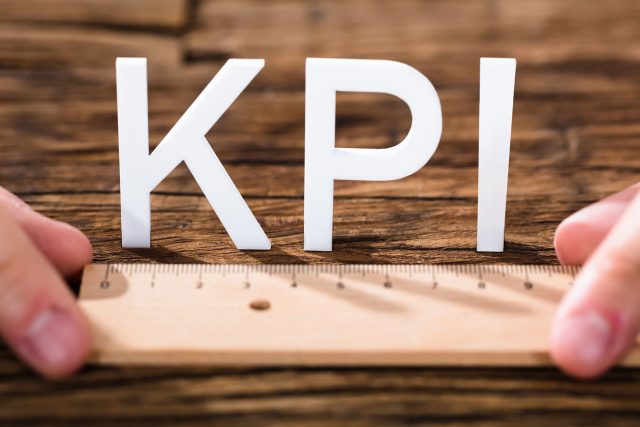
Book a Free Consultation!
✅Builders CFO Program
✅Business Improvement Program
✅Taxation Advice


7 key performance indicators every tradie and builder should know
It’s easy to get lost in the day-to-day of running a business. But to keep your business on track, it’s essential to track your performance. One easy way to do this: Key Performance Indicators (KPIs).
While there are many performance indicators you could monitor, here are seven KPIs our building and construction business advisors recommend tracking to measure your business’ health and overall performance.
-
Gross Profit margin
Gross profit margin is not only a great way to track if your sales are covering your operating costs, they’re also a vital metric to understand your business’ operational efficiency and profitability.
Gross profit (GP) margin is your Cost of Goods Sold (COGS). COGs include any costs associated with the completion of the construction project or job – from the labour to materials. While GP targets vary for each industry, for building and construction our business advisors generally recommend minimum GP margin of 25%. Meaning, every dollar of revenue yields 25 cents of gross profit.
-
Net Profit Margin
While GP margin measures costs vs profit, net profit margin measures your overall profit against both COGs and operating expenses. This is your remaining profits after all costs and overheads are subtracted from your profits or revenue.
Net profit margin is essential to assess your company’s overall financial health as it is your true profit (or your actual return on your investment and effort) after all costs are taken into account. The higher your net profit margin, the more profitable – and sustainable – your business will be.
For building and construction, you want to aim for a net profit of 10% or more. It’s worth noting that the average profit margin within the Australian house construction industry for 2023 was 7.8%. As an average, there would have been a considerable number of builders operated at either a loss or with minimal profits.
-
Cost variance
Your cost variance measures your financial performance, comparing your budget against actual costs. While it’s great to measure this at a project’s completion, it’s also important to monitor your cost variance throughout the project to avoid cost blow out and keeping as close to your budget as possible.
To calculate your cost variance during a building and construction project, you can use the following calculation:
(Planned Budget x Percentage of completion) – actual cost = cost variance
Variance reporting is invaluable or building and construction companies as they enable you to identify reasons behind deviations from your projected budget or quote.
-
Planned hours vs actual hours
While this doesn’t seem like a metric you’d follow for financial insight, tracking the variance of budgeted hours vs the actual hours helps you better manage costs as well as track the project progress. It can also aid in providing more accurate estimates and scopes of work in the future.
When calculating this metric, a positive variance indicates the project is ahead of schedule as it’s taking less time to complete than estimated. If the variance is negative, however, it’s taking more time and could cause project delays.
-
Working capital
Working capital is simply the difference between your current assets and liabilities, and is an indicator of your ability to pay your liabilities. This is where your balance sheet – and ensuring your books are up to date – is key. Not only to understand your asset and liabilities at any set time, but also to assess your overall business health, operational efficiency, and make sure you have enough cash to cover upcoming bills and other expenses.
Working capital is important as it measures your short-term liquidity and how much money you actually have to cover day to day operations, business obligations or commitments. It also impacts your cash flow.
For builders, the amount of working capital you need depends on your liabilities. As building and construction business advisors, we recommend our clients aim for enough working capital to cover at least 6 months of fixed expenses and cash outflows.
-
Net cash flow
Net cash flow measures your money coming in (inflow) vs your money going out (outflows), and is a key indicator to measure your cash flow position at any given time. Your net cash flow is also known as your sight balance and is the cash available to you.
By tracking your inflows and outflows, you will be able to monitor your overall cash flow and make sure you have enough money to cover your expenses and commitments. For builders and tradies, this metric can also be an early indicator or project delays or possibly financial difficulties in project completion. By closely monitoring your net cash flow, you can put strategies in place to correct cash flow issues before they impact your budget and project progress.
To calculate net cash flow:
Cash In (given period) – Cash Out (given period) = Net cash flow
-
Work in Progress
You might be surprised to see Work in Progress (WIP) listed in this KPI and metrics list. However, your WIP is an essential part of understanding and monitoring your overall performance and profitability.
Monitoring project process, it allows you to better manage your budget and give you insights into upcoming cashflow needs, potential risks, as well as the financial performance of the project.
Having trouble keeping your WIP up to date? We’ve got a free calculator to help you.
> Access the calculator now
Applying these KPIs
Using these seven key performance indicators, you can better assess your overall business health as well as reduce performance and project risks.
However, as with any targets, monitoring and regular updates is key and the KPIs you track should be aligned to your strategic goals. This will help you monitor progress and allow you to make strategic changes if required. Markets and economic changes might also impact business performance and may need to be taken into account when reviewing and setting your KPIs.
Another consideration is your data. Without good quality and accurate data, your reports and performance may not be a true reflection of your business position.
If you don’t have a process set up to monitor these KPIs or proper reporting in place it can be hard to know where to start. This is where a business advisor or accountant for your industry can be key, not only for setting up valuable reports to track and measure these KPIs but also provide you with strategies and advice to increase the overall health and performance of your business.
They can also support you with regular updates and analysis to give you more insight into your business and make better strategic decisions.

Send To Someone